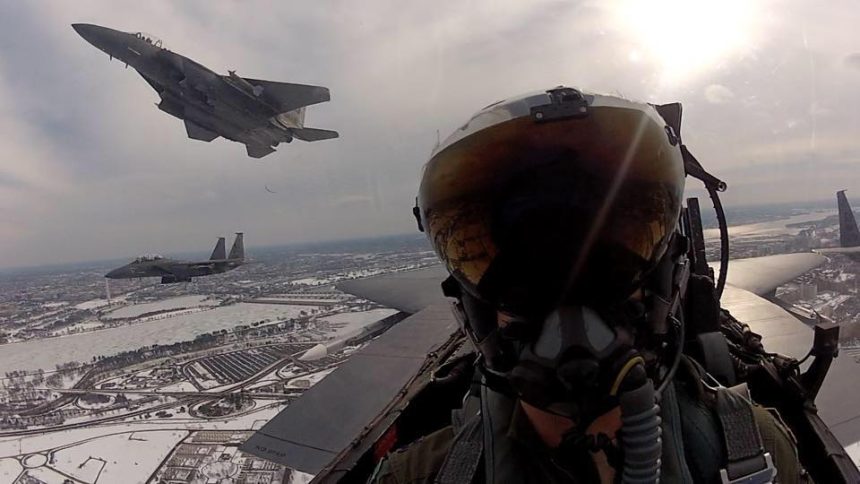The following picture gives you a different perspective of a missing man flyover.
Taken on Jan. 27, 2016, the picture in this post was captured from inside the cockpit of an F-15E Strike Eagle belonging to the 335th FS (Fighter Squadron) from Seymour Johnson Air Force Base while performing a missing man flyover alongside other three unit’s aircraft at Arlington National Cemetery in Washington D.C. The flypast was conducted for the burial of Lt. Gen. Winton “Bones” Marshall, a former 335th FS ace pilot in 1951 during the Korean War.
The 335th FS deployed its F-86 Sabrejets in Korea from Nov. 10, 1950 and by the end of the Korean War the unit led all squadrons with 12 aces and 218.5 kills, becoming part of the “MiG Killer” legend.
We usually get to see the missing man flyover from the ground. In this case, this shot gives a completely new, and pretty unusual, perspective, as one of the aircraft leaves the four-ship formation in a sudden climb. In fact, although several different versions of the formation exist, the most commonly used in the United States is based on the “finger-four” aircraft combat formation composed of two pairs of aircraf. The aircraft fly in a V-shape with the flight leader at the point and his wingman on his left. The second element leader and his wingman fly to his right. The formation flies over the ceremony point low and slow enough to be clearly seen and the second element leader abruptly pulls up out of the formation while the rest of the formation continues in level flight until all aircraft are out of sight: the climb represents the departure of the person who has died.
In other, older variants of the missing man flyover, the formation is flown with the second element leader position conspicuously empty.
Image credit: U.S. Air Force








